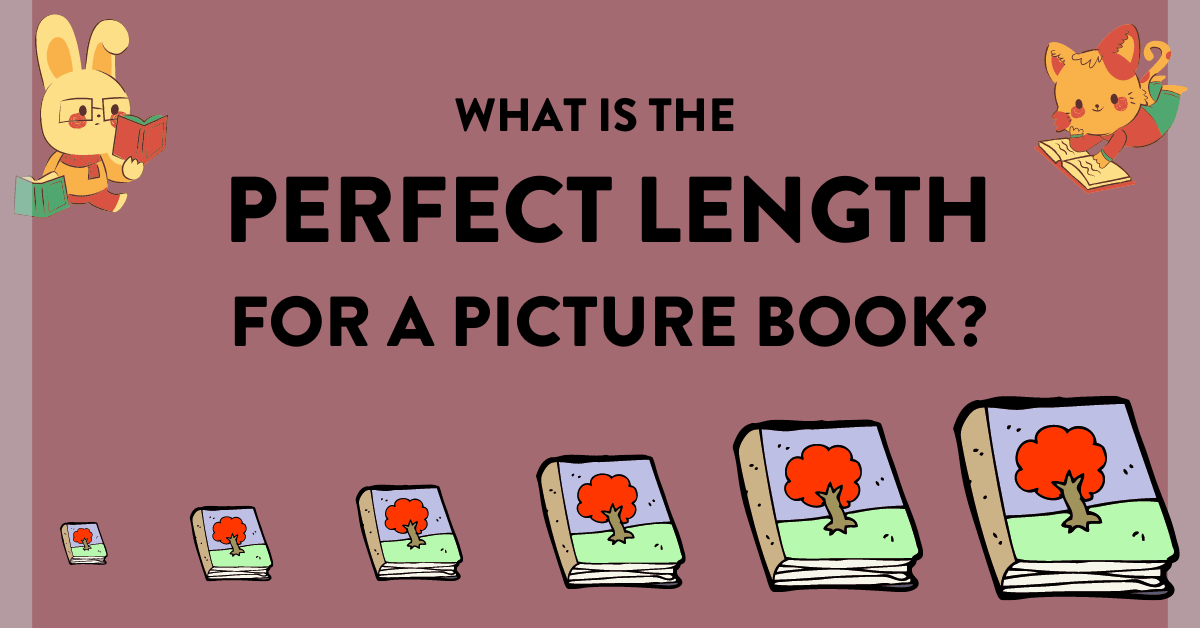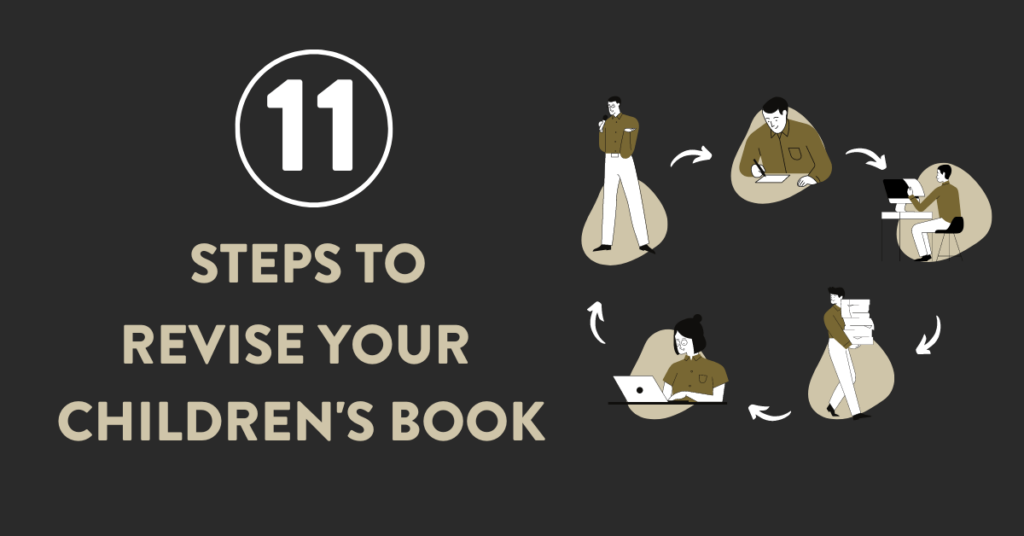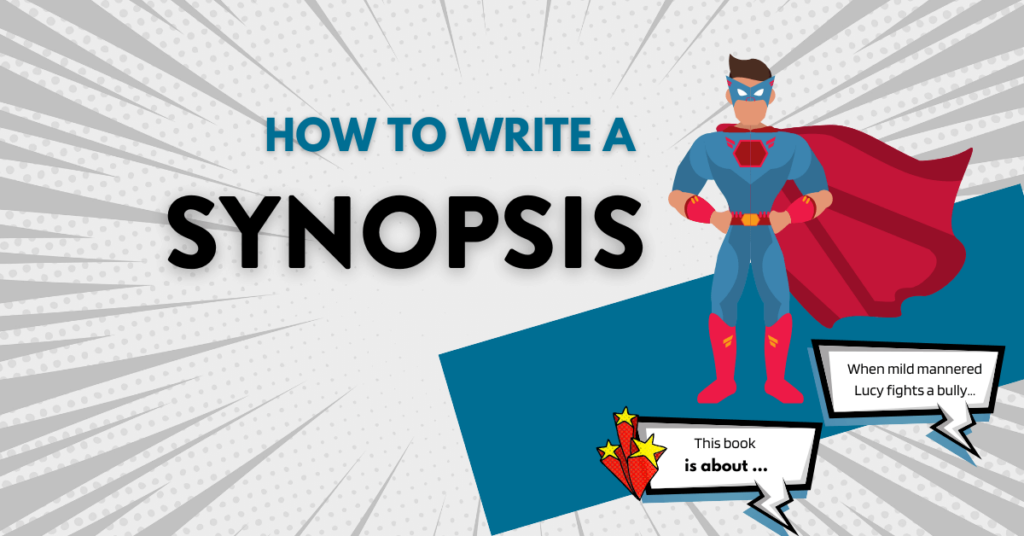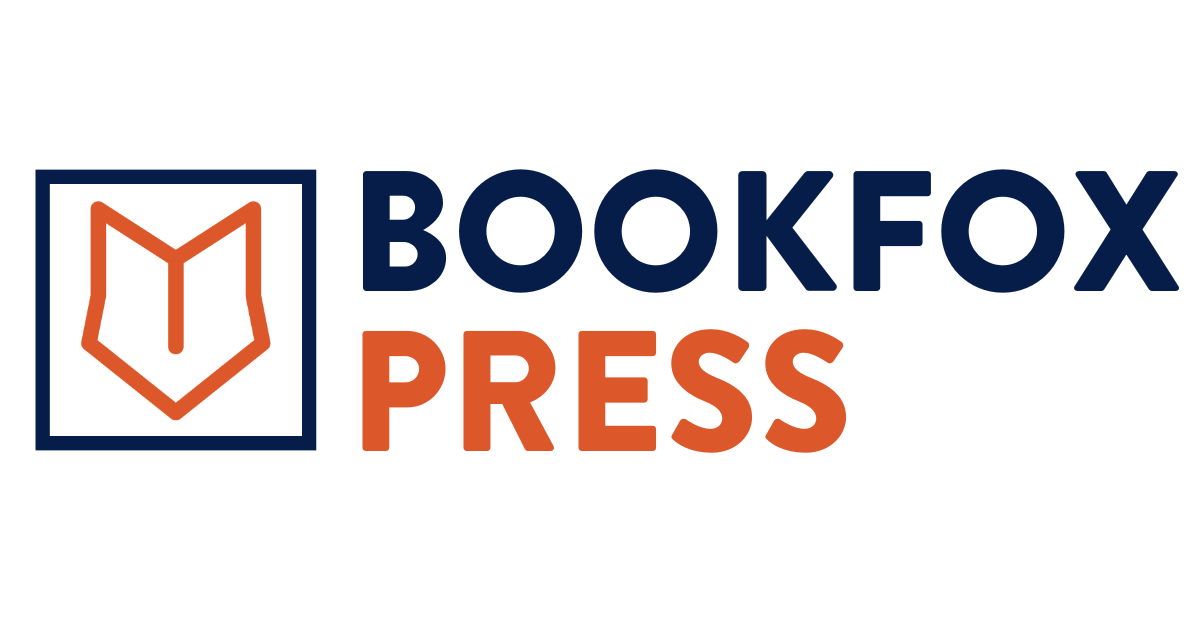
As a children’s book editor, I often get asked about the ideal length for a picture book. Luckily for you, I’ve answered this so many times that I have the best answer you’ll find online.
Most of the time, authors write children’s picture books that are too long. I’ve worked with probably a hundred manuscripts that were about 2,000 words, which is simply too long for a picture book.
It’s extremely rare for an author to write a book that’s too short, but every once in a while I see this. Usually, it’s about 200 words, and the author simply hasn’t fleshed out the full storyline yet. It’s more like a rough draft than a true polished final draft.
The real trick is getting your book to be exactly the right length.
By the end of this post, you’ll know how to write a book that’s not too long, not too short, but just right: just like Goldilocks.
And when you’re done, and want more help with your children’s book, read my benchmark post on “How to Write a Children’s Book in 12 Steps.”
The Typical Answer
Here’s the typical answer that you’re going to see everywhere online: The “right” length for a children’s book is under 1000 words.
That’s true, but it’s also misleading.
If you look at books published by first time authors, you have a much, much, much better chance of getting published if your book is more in the 500 – 800 word range.
That’s because you probably wrote it as 1,000 – 1,500 words for the rough draft, and then you ruthlessly edited it until every single word has a pivotal role to play and was completely essential to convey the story to the child.
In general, the shorter your children’s book, the better. But the sweet spot is truly 500 – 800 words. Anything shorter than that, and you won’t be able to tell the story, while anything longer than that, and you’re going to make the page ugly with text (and not leave any room for illustrations).
Why is Shorter Better?
- Keeps It Snappy. You’re not writing “War and Peace.” Look, kids have the attention span of a goldfish. They’re not here for an epic; they want a zippy story that gets to the point. A compact tale isn’t just smart, it’s essential for keeping your young reader’s attention locked in from start to finish. The quicker the story, the fewer the yawns.
- Leaves Room for Illustrations. Oh man, this is where so many writers trip up. They forget they’re not the only storyteller in the room. The illustrator has a massive role in how your book is received. So you gotta give them the space they need to strut their stuff. This is especially critical in picture books like “The Very Hungry Caterpillar” where the illustrations are just as iconic as the words themselves. Words give the script, but the art gives the emotion, the atmosphere, the feel. Imagine if Eric Carle had crammed his book full of words; those beautiful collages would have been sidelined.
- Cost: More Words Equals More $$$. More pages aren’t just a printing cost; they can add complications in binding, shipping, and storage. Every extra page can ramp up your production cost, and that makes the publisher unwilling to take on your book. So if you’re an aspiring author, you better have a darn good justification for going beyond the usual length, or else you’re going to face some budget hurdles.
Remember, these aren’t arbitrary rules; they’re guidelines shaped by industry norms and psychological understanding of your pint-sized audience.
If you’re struggling to hit these marks, you might want to get feedback on your book to find that sweet spot. And for a more structured approach, check out my course “Two Weeks to Your Best Children’s Book”—because sometimes a little guidance goes a long way.
Famous Children’s Book Lengths
It’s helpful to see the word counts of children’s picture books you already know. Take a look at these 3 early picture books.
- “Goodnight Moon” by Margaret Wise Brown – Approximately 130 words
- “Brown Bear, Brown Bear, What Do You See?” by Bill Martin Jr. – Around 200 words
- “The Very Hungry Caterpillar” by Eric Carle – About 220 words
All of these books are brief, but they’re classics for a reason. They get the job done in under 300 words. However, it’s more about the rhythm and the visual story the illustrations tell, not about a complex narrative.
Write this length if your writing for ages 0 – 4.
These three are slightly longer books, mainly because they’re for older children.
- “Where the Wild Things Are” by Maurice Sendak – Roughly 330 words
- “Chicka Chicka Boom Boom” by Bill Martin Jr. and John Archambault – Around 400 words
- “Don’t Let the Pigeon Drive the Bus!” by Mo Willems – About 700 words
Write these type of lengths if you’re writing for ages 3 – 7.
These books hit that sweet spot I was talking about. They’re rich enough in content to offer a full story, but they don’t stretch the attention span of your young audience.
Exceptions to the Rule
Established authors don’t have to follow the rules. If you have an audience and you’ve published several books and you have a good relationship with a publisher, then you can write a 1500 word children’s picture book and it won’t be a problem.
Here are some famous books that went over the established word count:
- “Madeline” by Ludwig Bemelmans – Approximately 1,200 words
- “The Polar Express” by Chris Van Allsburg – A hefty 1,600+ words
- “Jumanji” by Chris Van Allsburg – About 1,500 words
- “Curious George” by H.A. Rey and Margret Rey – Approximately 1,100 words
- “Strega Nona” by Tomie dePaola – Around 1,200 words
- “Cloudy With a Chance of Meatballs” by Judi Barrett – Roughly 1,100 words
- “The Tale of Peter Rabbit” by Beatrix Potter – About 1,000 words
- “Make Way for Ducklings” by Robert McCloskey – Around 1,200 words
However, if you’re a first time children’s book author, then you absolutely under no circumstances should try to write anything over 1000 words.
Length = Ages
The length of your book closely matches your ideal age of your child reader.
- Do not write a 100 word book for ages 5 – 7.
- Do not write a 1000 word book for ages 0 – 2.
In general, the longer your book is, the older your ideal audience.
Baby Steps: Ages 0-2 (Word Count: 0-100)
For our tiniest readers, we’re talking more about sensory stimulation than storytelling. Books like “Pat the Bunny” or “Goodnight Moon” have simple words and interactive elements like textures or flaps. These serve as excellent introductions to the concept of reading. Fewer words, more interaction.
- Short sentences: You’ll often find one or two sentences per page here.
- Interactive elements: Think tactile features like fuzzy patches or flaps to lift.
- Bright, bold illustrations: Catch their eye, and you’ve got their attention.
The Curious Years: Ages 2-4 (Word Count: 100-300)
As kids get a bit older, their ability to follow a narrative improves. Yet, they still don’t have the attention span for a Tolstoy-length novel. Aim for books like “Brown Bear, Brown Bear, What Do You See?” or “The Very Hungry Caterpillar.”
- Simple stories: Generally a single, straightforward storyline.
- Pattern and Repetition: Think of the repetition in “Chicka Chicka Boom Boom.” It’s almost like a song.
- Engaging visuals: More room for subtlety here, but keep those illustrations appealing.
Growing Minds: Ages 4-6 (Word Count: 300-700)
Here’s where things start getting interesting. Kids are beginning to understand more complex ideas and story structures. Books like “Where the Wild Things Are” sit comfortably in this space.
- Beginning, Middle, End: More developed story arcs come into play.
- Richer Language: Introduce new words—kids this age lap them up.
- Dialogue: Characters might have short conversations that add depth to the story.
Savvy Young Readers: Ages 6-8 (Word Count: 700-1,000)
Now you’re dealing with kids who have reading experience and longer attention spans. They can handle more complex stories like “Sylvester and the Magic Pebble” or even something a bit longer like “Strega Nona.”
- Multiple characters: More than just a protagonist and an antagonist.
- Moral of the Story: Themes can be more explicit, as kids can understand lessons and consequences.
- Complex Conflict: Characters do truly mean things. The main problem isn’t simple, innocent, or easily solved.
So, when you sit down to write or pick up your next children’s book, keep in mind that age appropriateness isn’t just about content—it’s also about length. A well-matched book can transform a reading experience from a yawning chore to an encore-demanding delight.
Word Count for Rhyming Books
If you’re writing a rhyming book, ignore everything I said above.
Word count for rhyming books are completely different. That’s because they’re already compressed due to the stanza/rhyme format.
The trouble is that a very short rhyme book can feel very, very long. THat’s why a book in rhyme needs to be between 200 – 500 words. A 700 word rhyme book is gargantuan — equivalent to about a 1500 word prose book (yes, I’m serious).
Here are the main troubles with word count when writing a rhyming book:
- The Padding Problem: In the quest for the perfect rhyme, there’s a temptation to add extra stanzas or lines. Maybe you’ve come up with a clever rhyme for “moon” and “baboon,” but does that baboon actually have a role in your story? If not, you’re just inflating the word count unnecessarily, and kids can smell filler like a dog smells bacon.
- The Complexity Conundrum: Let’s face it, some words are easier to rhyme than others. You might find yourself twisting into linguistic pretzels to make a rhyme work. The end result? You’re using five-dollar words when a nickel one will do, complicating your language and running up your word count. Remember, you’re writing for little ones, not for a poetry slam.
- The Rhythm Wrecker: In a rhyming book, pacing is everything. The rhyme and rhythm carry the reader along like a bobbing boat on a river. But add too many words, and suddenly your boat’s stuck on a sandbar.
Word Count for Nonfiction Books
Can nonfiction be longer than typical fiction in children’s picture books? Well, the short answer is yes. Long answer is:
More Elbow Room
First off, nonfiction generally gets a bit more slack when it comes to word count. Why? Because you’re dealing with real-world facts, events, or people that might need a fuller explanation.
But beware—longer doesn’t mean you get to turn your book into an encyclopedia. You’re not writing a textbook; you’re crafting a story based on facts. If you can tell it in 800 words, don’t bloat it to 1,200 just because you can.
A Different Kind of Engagement
Nonfiction has a unique advantage; it often tackles subjects kids are inherently curious about—think dinosaurs, planets, or historical figures like Rosa Parks. That innate interest buys you a little more time before their attention wanes.
However, don’t mistake this for a license to bore them. The engagement clock is always ticking.
Beware the Infodump
One of the cardinal sins in nonfiction picture books is the dreaded infodump. You’re not regurgitating a Wikipedia article; you’re weaving facts into an engaging narrative. So, every sentence, every word has to serve double duty—educating while entertaining.
So, where does that leave us? Aim for a word count between 800 to 1,200 words for nonfiction picture books.
That’s generally longer than your average fiction picture book, which often hovers around the 500 to 800-word range. But always remember: every word must earn its place.
3 Final Tips
1. Know Your Audience
You’re not writing for every child out there; you’re writing for a specific age group. Understand their attention spans, their comprehension levels, and what they find entertaining.
Tailoring your word count to your audience isn’t just smart; it’s essential for the book’s success.
2. A Joy to Read Aloud, Not a Chore
Let’s not forget, picture books are often the backdrop to bedtime stories, classroom lessons, and library read-alouds. If your book has too many words or a knotty plot, you risk turning an intimate bonding moment into a yawn-fest.
A picture book should be easily digestible and memorable so that it’s a joy for both the adult and the child to read and share.
3. Less is Often More
As tempting as it is to go full-on Dr. Seuss, remember you’re working in a medium where brevity is your best friend. Between you and your illustrator, you’ve got a limited space to create a world and tell a story. More isn’t always better; sometimes it’s just more.
Don’t think of a shorter word count as a limitation but rather as an opportunity to distill your story to its purest form.
FAQ
Hey, aspiring children’s book authors! Let’s dive into some frequently asked questions that haven’t been covered yet.
Q: Are there any hard-and-fast rules for word count per page?
A: Not exactly. The word count per page will depend on the book’s overall length, the age group, and the nature of the story. Sometimes a single word, a single phrase or a single sentence is enough; other times, you might have a full paragraph.
Q: How much should I worry about exceeding the average word count for my target age group?
A: While there’s some flexibility, it’s wise to stay close to industry standards, especially if you’re a first-time author. A book too far outside the norm might struggle to find a publisher willing to take a risk.
Q: Does the market have a say in how long my book should be?
A: You bet it does! Publishers often have a “sweet spot” for word counts based on what sells well. While creativity is encouraged, remember that a 2,000-word picture book for 4-year-olds will probably be a tough sell.
Q: Does genre affect the book length?
A: Absolutely. For instance, a concept book teaching ABCs might be shorter than a picture book with a narrative structure. While both fall under the umbrella of children’s picture books, the nature of the content will influence the length.
Q: What about board books? Are they the same as picture books?
A: Nope, they’re different! Board books are usually much shorter and are designed for the youngest readers, from infants to toddlers. Think under 50 words, and about 12 pages.
Q: How does the text-to-illustration ratio impact the book’s length?
A: It plays a significant role. Some stories might rely heavily on text, while others let the illustrations do the talking. Make sure there’s a harmonious balance; otherwise, you risk overwhelming the reader, no matter their age.
Q: What’s the deal with wordless picture books?
A: Wordless books obviously don’t have a word count, but they still have pacing, rhythm, and structure. Think of each picture as a “sentence” or “paragraph,” and structure accordingly.
Q: What about book series? Do they follow the same length guidelines?
A: Series often stay consistent in length for brand uniformity. The first book sets the pace, so make sure it’s spot-on from the get-go.
Q: Do eBooks and print books have different length considerations?
A: Generally, children’s books aren’t made into ebooks, because nobody buys children’s picture books as ebooks. But no, they don’t have different length considerations.
Ready to publish?
Are you ready for the publishing side of things? That’s where Bookfox Press can help. We’re not your run-of-the-mill kind of press. No siree! We’re about quality, depth, and yeah, a bit of literary flair.
If you’ve poured your heart and soul into a children’s book—whether it’s fiction or nonfiction—and you’re looking for a home that values both creativity and craftsmanship, Bookfox Press might just be the match you’ve been searching for.
We offer the kind of personalized attention you won’t find at big publishing houses. Our team is deeply invested in each project, focusing not just on the book but also on the author behind it. Give us a look and see if we’re a good fit.



